Daniel Hillel9780123485304, 0123485304, 0123485312, 0123485320, 0123485339, 0123485347
Table of contents :
Cover Page……Page 1
Book Description……Page 2
EDITOR-IN-CHIEF……Page 3
EDITORS……Page 4
EDITORIAL ADVISORY BOARD……Page 5
FOREWORD……Page 6
PREFACE……Page 7
INTRODUCTION……Page 9
B……Page 10
C……Page 11
D……Page 12
F……Page 13
G……Page 14
J……Page 15
M……Page 16
P……Page 18
R……Page 20
S……Page 21
T……Page 22
W……Page 23
Z……Page 24
Fertilizers and Fertilization ……Page 25
Fluorescence Spectroscopy ……Page 26
Forensic Applications ……Page 27
Freezing and Thawing ……Page 28
Germination and Seedling Establishment ……Page 29
Heat and Moisture Transport ……Page 30
Hydraulic Properties, Temperature Effects ……Page 31
Hydrodynamics in Soils ……Page 32
Iron Nutrition ……Page 33
Jenny, Hans ……Page 34
Lawes, John Bennet and Gilbert, Joseph Henry……Page 35
Loess……Page 36
Macropores and Macropore Flow, Kinematic Wave Approach ……Page 37
Metal Oxides ……Page 38
Microbial Processes……Page 39
Mineral-Organic-Microbial Interactions ……Page 40
Morphology……Page 41
Mycorrhizal Fungi……Page 42
Containers for Fertilizers……Page 44
Nutrient Movement……Page 45
Selection of Fertilizers……Page 46
Solubility of Fertilizers……Page 47
Scheduling Fertigation……Page 48
Behavior of Nutrients in Soil……Page 49
Root Growth……Page 50
Further Reading……Page 52
Essential Plant Nutrients……Page 53
Cation and Anion Exchange……Page 54
Soil Organic Matter……Page 55
Soil Acidity and Alkalinity……Page 56
N mineralization/immobilization……Page 57
Phosphorus……Page 58
Potassium……Page 59
Sulfur……Page 60
Calcium and Magnesium……Page 61
Further Reading……Page 62
Soil Test……Page 63
N Fertilizers……Page 64
Methods of N Application……Page 65
P Fertilizers……Page 66
K Fertilizer Recommendation……Page 67
Iron……Page 68
Further Reading……Page 69
Shape and Charge of Soil Clays……Page 70
Flocculation and Attraction Forces……Page 71
Clay charge density and electrostatic attraction forces……Page 72
The flocculation value of sodium and calcium montmorillonites……Page 73
Dispersion and flocculation in Na/Ca clay systems……Page 74
Dispersion and the Hydraulic Properties of Soils……Page 75
Further Reading……Page 77
The Fluorescence Phenomenon……Page 78
Fluorescence Spectra……Page 79
Limitations and Problems……Page 80
Fluorescence Quenching……Page 81
Fluorescence Spectra……Page 82
Nature of Fluorophores……Page 83
Humification Indexes and Differentiation of Humic Substances by Fluorescence Properties……Page 84
Conformational Studies by Fluorescence Polarization……Page 86
Molecular and Mechanistic Aspects……Page 87
Sorption/Binding of Fluorescent Organic Pollutants to Soil Organic Components……Page 89
Fluorescence Polarization……Page 90
Soil Mineral Components……Page 91
Surface Acidity……Page 92
Molecular Distribution, Conformation, Aggregation, and Mobility……Page 93
List of Technical Nomenclature……Page 94
Further Reading……Page 95
Efficiency of Foliar-Applied Fertilizers……Page 96
Application of Foliar Nutrients……Page 97
Mechanisms of Penetration of Foliar-Applied Nutrients……Page 98
Factors Affecting Cuticular Penetration……Page 100
Plant Use of Foliar-Applied Nutrients……Page 101
Introduction……Page 102
Trophic Structures in Soil Food Webs……Page 103
Trophic Interactions and Soil Ecosystem Processes……Page 104
Food Web Models……Page 105
Trophic Interactions and the Dynamics and Stability of Soil Populations and Food Webs……Page 107
Further Reading……Page 109
Collection of Evidentiary Soil Samples……Page 110
Soil Color……Page 111
Soil Particle-Size Distributions……Page 112
Buried Remains……Page 113
Trace Evidence in Soil……Page 114
Further Reading……Page 115
Introduction……Page 116
Roots and Mycorrhizae……Page 117
Litterfall and Litter: Organic Matter Recycling in Forest Soils……Page 118
Biogeochemistry and Hydrology……Page 119
Human Effects on Forest Soils……Page 120
Summary: Soil Conditions for Forest Productivity……Page 121
Further Reading……Page 122
Infrared Spectral Analysis……Page 123
Common Experimental Techniques……Page 125
Diffuse Reflectance Infrared Fourier Transform Experiments……Page 126
Attenuated Total Reflectance Experiments……Page 127
Introduction……Page 128
Fractal Objects……Page 129
Physical Models of Emerging Fractal Scaling……Page 132
Direct Geometric Measurements……Page 133
Proxy Measurements……Page 136
Transport Processes……Page 138
The Use of Soil Fractal Parameters……Page 139
Further Reading……Page 140
Global Significance……Page 141
Guiding Principles……Page 142
Tillage Practices……Page 143
Crop Residue Management……Page 144
Soil Amendments……Page 145
Further Reading……Page 146
Heat and Water Relations During Freezing and Thawing……Page 147
Freezing Dynamics……Page 148
Freeze-Thaw Impacts on Infiltration……Page 149
Freeze-Thaw Impacts on Soil Erodibility……Page 150
Factors Affecting the Impact……Page 151
Soil Freezing and Thawing Effects on Solute Migration……Page 152
Classification……Page 153
Physiology and Reproduction……Page 154
Biotic Interactions……Page 155
Parasitism……Page 156
Fungal Associations with Fauna……Page 157
Soil Architecture……Page 158
Isolation Methods……Page 159
Molecular Methods……Page 160
Exploitation of Soil Fungi……Page 161
Further Reading……Page 162
Elementary Features and Basic Principles of GIS Applications to Soils……Page 164
Data Inventory and Management Applications……Page 166
Data Analyses and Mapping Applications……Page 168
Modeling and Decision-Support applications……Page 169
Further Reading……Page 172
Temperature Requirements……Page 173
Water Uptake by Seeds and Seedlings……Page 174
Differentiation Between the Seed Germination Phases……Page 175
Physical Principles of Water Uptake by Seeds and Seedlings……Page 176
Seed-Coat Diffusivity to Water……Page 177
Impedance to Water Flow Across the Seed-Soil Interface……Page 178
List of Technical Nomenclature……Page 179
Further Reading……Page 180
Global Distribution of Grasslands and Grassland Soils……Page 181
Environment of Pedogenesis in Grasslands……Page 182
Organic Matter Accumulation, Bioturbation, and Structure Development……Page 183
Mineral Weathering, Clay Translocation, and Secondary Carbonate Mineral Formation……Page 185
Classification of Grassland Soils……Page 187
Introduction……Page 188
Soil Sources……Page 189
Soil Sink for Methane……Page 190
Efforts to Reduce Emissions……Page 191
Nitrous Oxide……Page 192
Agricultural Emissions……Page 194
Potential for Reducing N2O Emissions……Page 195
Basic Concepts……Page 196
Large Storage Capacity Compared with Annual Recharge/Discharge……Page 197
Hidden Medium……Page 198
Facility for Improving Water Quality……Page 199
Groundwater State and Behavior……Page 200
Darcy’s Law……Page 201
Aquifers and Groundwater as Part of a Water Resources System……Page 202
Groundwater Contamination Sources and Events……Page 204
Groundwater and Aquifers Need to be Managed……Page 205
Groundwater Management Levels and Models……Page 206
Anthropogenic Constraints on Groundwater Management……Page 208
Nonphysical Means of Groundwater Management……Page 209
Further Reading……Page 210
Heat and Moisture Transport……Page 212
Examples of Coupled Heat and Water Flow in Soils……Page 214
Limitations in Our Understanding of Coupled Heat and Water Flow……Page 216
Further Reading……Page 217
Introduction……Page 218
Environmental Contamination……Page 219
Adsorption……Page 220
Bioavailability-Natural Attenuation Interactions……Page 221
Biological Response to Metals……Page 222
Soil Remediation……Page 223
Further Reading……Page 224
Hilgard, Eugene Woldemar……Page 225
Further Reading……Page 230
From Physical Chemistry to First Contacts with Drainage Theory and Practice……Page 231
Auger-Hole Method for Determining Hydraulic Conductivity in the Field……Page 233
Flow of Water in Shallow Soils Without or With Structure in Their Natural Condition……Page 234
Applications of Drainage Theory……Page 235
Water Management of the Plant Root Zone……Page 236
Further Reading……Page 237
Introduction……Page 238
Historical Perspective……Page 239
Chemical Perspective on HS Genesis……Page 240
Nondegradative and Newer Degradative Techniques……Page 241
Chemical Perspective on Microbial Role in Humification……Page 242
Microbiological Perspective……Page 243
Phase 3: Direct Genesis and Degradation……Page 244
Climate and Soil Type……Page 246
Role of Microbial Community Composition……Page 247
Summary……Page 248
Further Reading……Page 249
Relative Permeability……Page 250
Effect of Temperature on Hydraulic Conductivity……Page 251
Water and Energy Transport in a Nonisothermal Soil……Page 252
List of Technical Nomenclature……Page 253
Further Reading……Page 254
Hydrology of Hydric Soils……Page 255
Iron and Manganese Reduction……Page 256
Hydric Soil Indicators……Page 257
Iron and Manganese Features……Page 258
Further Reading……Page 259
Alkanes……Page 260
Homologous Series……Page 261
Transport of Petroleum Hydrocarbons in Soil……Page 262
Estimation of the Distribution of Hydrocarbons in Soil……Page 263
Solubilization of Hydrocarbons into Groundwater……Page 264
Dissolved-Phase Groundwater Plume……Page 265
Transport in Fractures……Page 266
Thermal desorption……Page 267
Incineration……Page 268
Further Reading……Page 269
Steady-State Flow Through a Saturated Medium……Page 270
Transient Flow Through a Saturated Medium……Page 271
Steady-State Flow Through an Unsaturated Medium……Page 272
Further Reading……Page 273
Introduction……Page 274
Water-Retention Curve……Page 275
Causes of Hysteresis……Page 276
Modeling……Page 277
Summary……Page 279
Further Reading……Page 280
Fluid Distribution in the Pore Spaces……Page 282
Movement of Immiscible Fluids in Soils……Page 286
Partitioning of NAPL Components Among the Fluid and Solid Phases……Page 288
Further Reading……Page 289
Inceptisols with Permanent or Intermittent High Water Tables……Page 291
Anthrepts……Page 292
Xerepts……Page 293
Udepts……Page 294
Further Reading……Page 296
Introduction……Page 297
Constant Pressure Head at the Ground Surface……Page 298
The Advance of a Wetting Front……Page 299
The Effects of Infiltration Rate……Page 300
The Effects of Gravity……Page 301
Further Considerations……Page 302
Iron in the Soil and its Acquisition by Plants……Page 303
Iron Uptake, Long-Distance Transport in the Plant, and Storage in the Cell……Page 305
Biochemical Functions of Fe in Plants……Page 306
Lime-Induced Chlorosis……Page 307
Iron Deficiency and Toxicity……Page 308
Further Reading……Page 309
Introduction……Page 310
Water Shortage……Page 311
Waterlogging and Salinity……Page 312
Plant nutrients……Page 313
Heavy metals……Page 314
Sustainability……Page 315
Introduction……Page 316
Furrow Irrigation……Page 317
Basin and Border Irrigation……Page 318
Set-Move Sprinkler Systems……Page 319
Moving Sprinkler Systems……Page 320
Subirrigation……Page 321
List of Technical Nomenclature……Page 322
Radioisotopes as Tracers……Page 323
Stable Isotopes as Tracers……Page 324
Neutron Moderation……Page 326
Further Reading……Page 327
Control Volume, Representative Control Volume, Homogeneity, and Heterogeneity……Page 328
Scales and Anisotropy……Page 329
Pressure Head- or Moisture-Dependent Anisotropy……Page 330
Influences of Anisotropy on Movement of Moisture Plumes in Soils……Page 332
Further Reading……Page 334
Jenny, Hans……Page 336
Further Reading……Page 343
Education and Educator……Page 344
Kellogg as Scientist-Administrator……Page 345
Training Soil Scientists……Page 346
Tropical Soils……Page 347
Science and Policy……Page 348
Further Reading……Page 349
Two-region approach……Page 350
Chemical and Microbiological Nonequilibrium……Page 351
Transformation……Page 352
Oxidation-Reduction……Page 354
Nonequilibrium Processes Involving Dissolved Aqueous Phase Constituents……Page 355
Nonequilibrium Processes Involving Dissolved Nonaqueous-Phase Constituents……Page 356
Further Reading……Page 357
Kirkham, Don……Page 358
Kirkham’s Scientific Contributions……Page 360
Further Reading……Page 362
Spatial Information and Mapping……Page 364
Land-Use Suitability……Page 365
Surface Conditions……Page 367
Site Inventory……Page 368
Plan Development and Implementation……Page 369
Further Reading……Page 370
John Bennet Lawes……Page 371
The Agricultural Background in the Second Quarter of the Nineteenth Century……Page 372
The Start of the Experimental Program at Rothamsted……Page 373
The Place of Long-Term Experiments in Agricultural Research and the Role of Lawes and Gilbert……Page 377
Introduction……Page 379
Leachate Quantity……Page 380
Preferential Leaching Processes……Page 381
Modeling and Risk Assessment……Page 383
Summary……Page 385
Introduction……Page 386
Life History……Page 387
The Work of Liebig……Page 388
Liebig and Sprengel……Page 390
Summary……Page 391
Further Reading……Page 392
Exchangeable Acidity……Page 393
Aluminum Toxicity……Page 394
Calcium and Mg Deficiencies……Page 395
Response to Liming……Page 396
Titration of Soil with a Base……Page 398
Exchangeable Al……Page 399
Conclusion……Page 400
The Early Years……Page 401
Lipman the Scientist……Page 402
Lipman the Administrator……Page 404
The End of an Era……Page 406
Introduction……Page 407
Origin of Silt and Eolian Transport of Loess……Page 408
Stratigraphy……Page 409
Geomorphology……Page 410
Paleosols in Loess and Studies of Paleoclimate……Page 411
Environmental Concerns……Page 413
List of Technical Nomenclature……Page 414
Introduction……Page 416
Further Reading……Page 421
Lysimeter Types……Page 422
Lysimeter Design Considerations……Page 423
Lysimeter Shape and Area……Page 424
Soil monolith collection……Page 425
Weighing-Lysimeter Scale Systems……Page 426
Measuring ET or Latent Heat Fluxes with Weighing Lysimeters……Page 427
Further Reading……Page 428
N Fixation……Page 430
Fertilizers and Manures……Page 431
Phosphorus……Page 432
Calcium……Page 433
Sulfur……Page 434
Further Reading……Page 435
Early Considerations on Flow and Transport in Soils……Page 436
Deviations from Richards Equation and Convection-Dispersion Approaches……Page 437
General Requirements……Page 438
Kinematic Wave Theory……Page 439
Application of the Kinematic Wave Model……Page 440
Summary……Page 443
Further Reading……Page 444
Summary of Global Trends in Animal Production……Page 445
Trends in Manure Production……Page 447
Manure Characteristics by Species……Page 448
Manure management for grassland agriculture……Page 450
Contemporary Approaches to Manure Management……Page 451
Marbut, Curtis Fletcher……Page 453
Missouri Ozarks Native and Academic……Page 454
Scientist in Soil Survey……Page 456
Internationalist-Explorer……Page 457
Further Reading……Page 460
Climate……Page 461
Vegetation……Page 463
Leaching and Redistribution of Calcite and Silica……Page 464
Rubefaction……Page 465
Development of Vertic Features……Page 466
Major Soil Types……Page 467
Physical, Chemical, and Mineralogical Properties……Page 468
Mineralogical Properties……Page 469
Further Reading……Page 470
Fe Oxides……Page 471
Goethite (alpha-FeOOH)……Page 472
Ferrihydrite (Fe5HO8 · 4H2O)……Page 474
Rare Fe Oxide Minerals……Page 475
Phyllomanganates (Layer Structures)……Page 476
Al Oxides……Page 477
Rare Al Oxide Minerals……Page 478
Si Oxides……Page 479
Ti Oxides……Page 480
Introduction……Page 481
Acidification……Page 482
Redox Reactions……Page 483
Biosorption……Page 485
Partitioning in the cellular environment……Page 486
Carbonates……Page 487
Ore Leaching……Page 488
Bioremediation……Page 489
Further Reading……Page 490
Nutrients……Page 491
Water……Page 493
Oxygen……Page 494
Light……Page 495
Predation and Parasitism……Page 496
Introduction……Page 498
Soil Nucleic Acid Extraction……Page 499
DNA Reassociation……Page 500
Nucleic Acid Hybridization……Page 501
Microscopic Examination and Fluorescent In Situ Hybridization……Page 502
Community Richness……Page 503
PCR-Based Community Structure Analysis……Page 504
Data Analysis……Page 505
Introduction……Page 506
Amount of Soil Microorganisms……Page 507
Substrate Concentration……Page 508
Exponential Growth……Page 509
Structured Models……Page 510
Growth Kinetics In Situ and Ex Situ……Page 511
Diversity of Growth Characteristics: Life Strategy Concept……Page 514
Decomposition as Self-Decay……Page 517
Decomposition of Cellulose……Page 519
Zinc……Page 522
Manganese……Page 523
Iron……Page 524
Boron……Page 525
Micronutrient Soil Tests……Page 526
Micronutrient Fertilizers……Page 527
List of Technical Nomenclature……Page 528
Nature of Mineral Colloid Surfaces……Page 529
Hydrophobic bonding on clay-organic complexes……Page 530
Aluminum Oxides……Page 531
Iron Oxides……Page 532
Polyphenol Pathway……Page 533
Surface Interactions of Soil Minerals with Microorganisms……Page 534
Mineral Weathering……Page 536
Soil Structural Stability……Page 537
Transformations of Organic Pollutants……Page 539
Transformations of Metals……Page 541
Further Reading……Page 542
Quartz……Page 543
Feldspars……Page 544
Micas……Page 548
Common Accessory Primary Minerals……Page 549
Olivines……Page 551
Pyroxenes and Amphiboles……Page 552
Further Reading……Page 553
Horizons……Page 554
Soil Texture……Page 555
Soil Color……Page 556
Redoximorphic Features……Page 557
Shape……Page 559
Grade……Page 560
Effervescence……Page 561
Amount……Page 562
Further Reading……Page 563
Controling evaporation from the soil surface……Page 564
Improving infiltration rate……Page 565
Controlling Runoff and Soil Erosion……Page 566
Improving Soil Structure……Page 567
Improving the Soil Chemical Environment……Page 568
Organic Mulches……Page 569
Plastic mulch……Page 570
Colored plastic mulch……Page 571
Methods of Mulch Application……Page 572
Improvement of Input-Use Efficiencies……Page 573
Limitations of Mulching……Page 574
Further Reading……Page 575
Introduction……Page 576
Complexity……Page 577
Defining the Mycorrhizal System and Participants……Page 578
Diversity and the Delivery of Ecosystem Services……Page 579
Functional Genomics……Page 581
Games and Models for Mapping Causality……Page 582
Hierarchy and Scaling……Page 583
Autonomous Networks……Page 584
Further Reading……Page 585

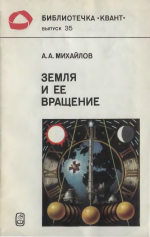
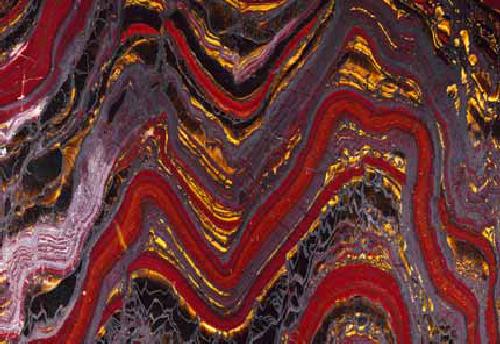
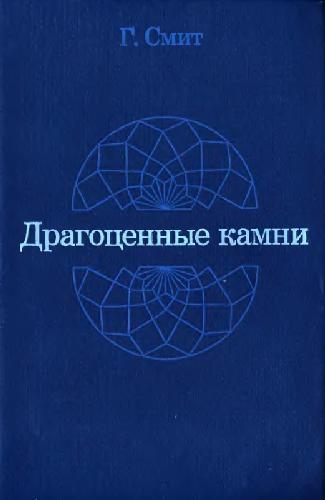
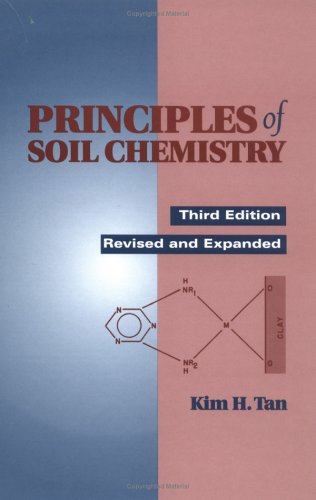
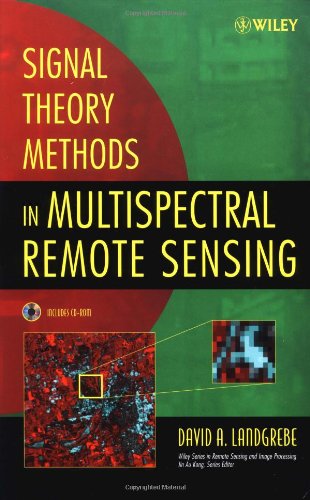

Reviews
There are no reviews yet.